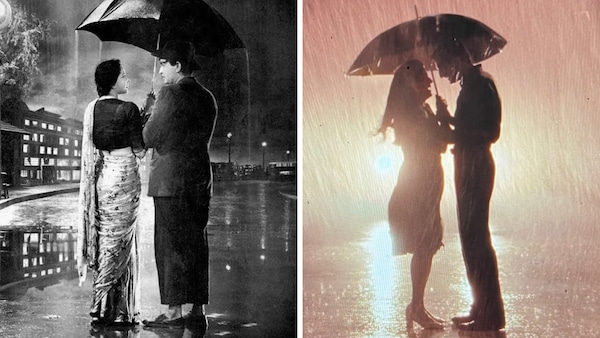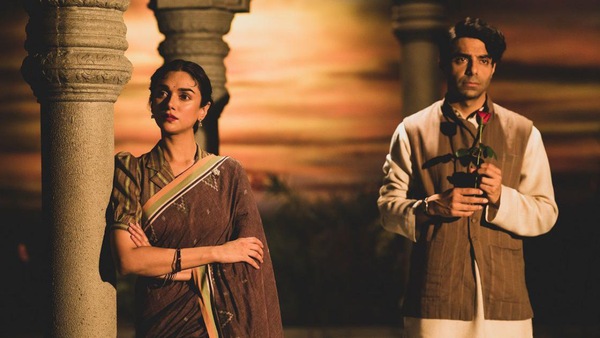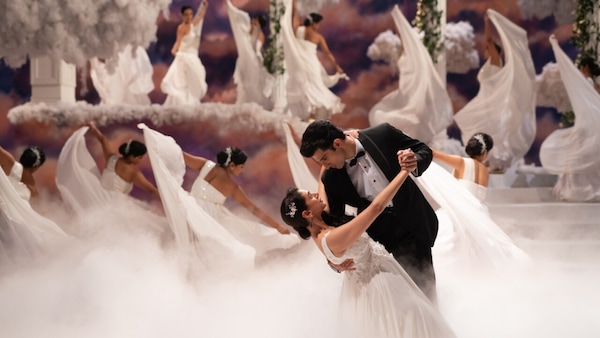Raj Kapoor's popularity in USSR, AIR’s song ban, and other pop-culture references in Jubilee
Deepansh Duggal dissects the Easter Eggs, pop-culture references and allusions to historical events and Bollywood scandals shown in the Amazon Prime Video show Jubilee.

Last Updated: 03.57 PM, Jun 14, 2023
“A mass hero should be the government's mouthpiece”, says a fictional Mr Jotwani, the head of the I & B ministry, in a scene from the show Jubilee. The Prime Video production is garnering praise for its realistic portrayal of the inner workings of the Indian film industry. The show is set in the ‘50s and briefly touches on the pre-Partition riots. Over the course of 10 episodes, we see fictionalised accounts of real-life incidents that shaped Bollywood as we know it. The accounts play out in gilded frames adorned with plenty of golden silhouettes. Some of these allusions show up as sub-plots while others are Easter Eggs at best. To begin with, the fictional (and lavish) estate of Roy Talkies is inspired by the real-life Bombay Talkies; India’s first-ever film studio helmed by Himanshu Rai and Devika Rani – both of whom are considered pioneers of the Indian film industry.
The original Bombay Talkies estate was built in Malad; it was just as exotic and grand as the Roy Talkies in Jubilee. The 18-acre plot of land was also a home to lead actors, technicians, and other staff – many of whom were employed by the studio and received fixed salaries. Bollywood took years to emulate the professionalism with which Bombay Talkies operated. However, this is one of the many pop-culture references in the show.

Bollywood’s First-Ever Scandal
Not every day does one hear of a leading actress having an affair with an actor she starred opposite in a film. Devika Rani, who starred opposite Najam-ul-Hassan, in Jawani Ki Hawa (1935) and Jeevan Naiya (1936) eloped with him to Calcutta, while still being married to Bombay Talkies owner Himanshu Rai. The sequence of events that followed are very similar to those shown in Jubilee. Just like the fictional Binod Das (Aparshakti Khurana) travels to Lucknow to sign Jamshed Khan (Nandish Singh Sandhu) for the Roy Talkies production, Rai’s friend and co-worker Sashadhar Mukherjee (real-life Binod), tracked down Hasan in Calcutta, while he was on the run with Devika Rani (played by Aditi Rao Hyadri in Jubilee). Rai was less than pleased with the development and sacked Hasan, contrary to what we see in Jubilee, where Binod takes over Jamshed’s role after his death.
Another aspect of its history that differs from the series is that, instead of Mukherjee taking on the role of Ashok Kumar (real-life alias of Madan Kumar), it was Mukherjee’s brother-in-law Kumudlal Kunjilal Ganguly, a lab assistant at Bombay Talkies, who bagged the coveted role. While Ashok Kumar went on to attain legendary status in the coming years given his acting chops, Jubilee’s Madan Kumar is seen tip-toeing between his guilt of having jeopardized Jamshed's career and his angst for Jay Khanna, who threatened his position in the industry.

Soviet infiltration of Indian Cinema
In the aftermath of the Cold War, with the newly emerging Indian film industry, both America and the USSR attempted to capitalise on the soft power of Indian films. America introduced CinemaScope technology which allowed films to be projected on a widescreen, thereby tempting film studios to help push their propaganda. Meanwhile, the Soviets funded Indian films as long as the male lead was, as Mr Jotwani said, a ‘government mouthpiece’. Case in point: Raj Kapoor, who was adored by the Russians, was allowed a visit to Moscow without a visa. His song Awara Hun was played in official Russian banquets and gatherings. It is rumoured that Russian ex-President Boris Yeltsin and Moscow Mayor Yuri Luzhkov hummed the song back in the day. The reason behind Russia’s love for Raj Kapoor? Optimism. Russians saw hope in Raj Kapoor’s character in Awara (1951). Kapoor brought in a wave of optimism and cheerfulness among Russians who were hit hard by the Cold War.

But was it just optimism at play? Or did propaganda play a role too? One cannot say for sure. As for the show Jubilee, we see a fictional RN Mullick, a representative of the Indian government say “A soldier, engineer, honest, patriotic freedom fighter – a movie star should have these qualities. The villains will be corrupt capitalists”. In not-so-explicit terms, Jubilee does allude to the possibility of the Indian government trying to influence the films back in the ‘50s to promote the Soviet doctrine.
In this tussle between the two global superpowers, it was independent film studios like Roy Talkies that suffered the most.

All India Radio: No more Hindi songs
The Indian film industry did not concede to the Indian government’s pressure to make propaganda films easily. Much like Roy Talkies, studios in the ‘50s wanted to be free from any kind of influence. To pressurize the studios, then I & B minister BV Keskar (Jotwani in Jubilee) placed a ban on all Hindi songs on the radio in 1952, calling them a bad influence on Indian culture. The ban on film songs hit the business of the studios since these songs were the heart and soul of the films. Enter Ceylon radio which was broadcast in Sri Lanka, and therefore free from AIR’s control. Radio announcer Ameen Sayani came to the rescue; he recorded Geetmala, a countdown show of Hindi songs in India, and flew the tape to Radio Ceylon in Sri Lanka. It was from there that Hindi songs were broadcast to Indian listeners. In 1957, the ban was permanently lifted with the introduction of Vividh Bharti.
In Jubilee, we see pretty much the same sequence of events play out; except instead of a radio broadcaster, it is Binod Das who puts on a fake moustache and hand delivers the recorded radio programs for them to be played over Ceylon radio.
Jubilee is a treasure trove of film anecdotes inspired by real-life events. A must-watch for all cinephiles, the series is also a love letter to the long lost days of black-and-white cinema, where it took a village to make a film.
Bonus trivia: The umbrella scene in episode 4 of the series between Niloufer and Jay Khanna, is a hat-tip to Raj Kapoor and Nargis’s umbrella shot from the classic Pyaar Hua Ikraar Hua from the film Shree 420 (1955).
You can watch Jubilee here.
(Views expressed in this piece are those of the author, and do not necessarily represent those of OTTplay)
(Deepansh Duggal writes essays, think pieces and features on films and TV shows. He tweets at @Deepansh75)

